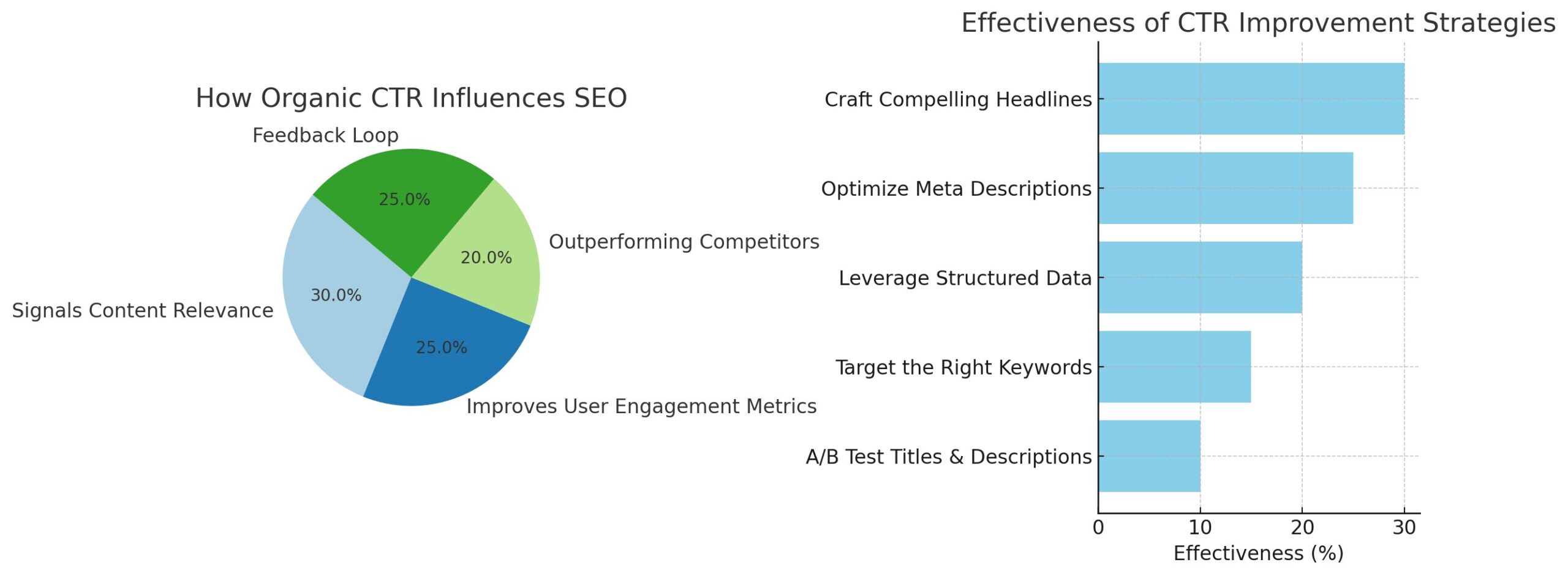
Alibaba Qwen 2.5: A Comprehensive Guide to Understanding and Utilizing the Next-Generation AI Model
Introduction
In the rapidly evolving landscape of artificial intelligence, Alibaba has consistently been at the forefront of innovation. The Chinese tech giant has recently unveiled its latest AI model, Qwen 2.5, a significant upgrade from its predecessor, Qwen 2.0. This new model promises to deliver enhanced capabilities, improved performance, and a more user-friendly experience. In this article, we will delve into what Qwen 2.5 is, its key features, and how you can leverage its power for various applications.
What is Qwen 2.5?
Qwen 2.5 is an advanced AI model developed by Alibaba Cloud, designed to provide state-of-the-art natural language processing (NLP) capabilities. It is part of Alibaba’s broader initiative to integrate AI into various sectors, including e-commerce, cloud computing, and data analytics. Qwen 2.5 builds upon the foundation laid by Qwen 2.0, incorporating several improvements that make it more efficient, accurate, and versatile.
Key Features of Qwen 2.5
- Enhanced Language Understanding: Qwen 2.5 boasts a deeper understanding of context, nuances, and subtleties in human language. This improvement allows it to generate more coherent and contextually relevant responses, making it ideal for applications like chatbots, virtual assistants, and customer service automation.
- Multilingual Support: One of the standout features of Qwen 2.5 is its ability to understand and generate text in multiple languages. This makes it a valuable tool for businesses operating in global markets, as it can seamlessly handle communication in various languages without compromising on quality.
- Improved Efficiency: Qwen 2.5 has been optimized for better performance, resulting in faster processing times and reduced computational costs. This makes it more accessible for businesses of all sizes, including those with limited resources.
- Customizability: Alibaba has designed Qwen 2.5 to be highly customizable, allowing users to fine-tune the model to suit their specific needs. Whether you’re looking to create a specialized chatbot or a sophisticated data analysis tool, Qwen 2.5 can be tailored to meet your requirements.
- Integration with Alibaba Cloud: Qwen 2.5 is seamlessly integrated with Alibaba Cloud’s suite of services, providing users with a comprehensive ecosystem for AI development and deployment. This integration simplifies the process of incorporating AI into existing workflows and applications.
How to Use Qwen 2.5
Now that we’ve covered the key features of Qwen 2.5, let’s explore how you can use this powerful AI model for various applications.
1. Setting Up Qwen 2.5
Before you can start using Qwen 2.5, you’ll need to set it up on your preferred platform. Alibaba Cloud provides detailed documentation and tutorials to guide you through the installation process. Here’s a high-level overview of the steps involved:
Step 1: Create an Alibaba Cloud Account
If you don’t already have an Alibaba Cloud account, you’ll need to create one. Visit the Alibaba Cloud website and sign up for an account. Once your account is set up, you’ll have access to a wide range of cloud services, including Qwen 2.5.
Step 2: Access the Qwen 2.5 Model
Navigate to the AI and Machine Learning section of the Alibaba Cloud console. Here, you’ll find the Qwen 2.5 model available for deployment. Follow the prompts to select the model and configure it according to your needs.
Step 3: Configure Your Environment
Qwen 2.5 can be deployed in various environments, including virtual machines, containers, and serverless architectures. Choose the environment that best suits your application and configure it accordingly. Alibaba Cloud provides pre-configured templates to simplify this process.
Step 4: Deploy the Model
Once your environment is set up, you can deploy the Qwen 2.5 model. This process involves uploading your data, setting up API endpoints, and configuring any additional parameters. Alibaba Cloud’s intuitive interface makes this step straightforward, even for users with limited technical expertise.
2. Using Qwen 2.5 for Natural Language Processing
Qwen 2.5 excels in natural language processing tasks, making it an ideal choice for applications that require advanced language understanding. Here are some common use cases and how to implement them using Qwen 2.5.
Chatbots and Virtual Assistants
One of the most popular applications of Qwen 2.5 is in the development of chatbots and virtual assistants. These AI-driven tools can handle customer inquiries, provide support, and even perform tasks like booking appointments or processing orders.
Implementation Steps:
- Define the Scope: Determine the specific tasks and interactions your chatbot will handle. This could include answering FAQs, providing product recommendations, or assisting with troubleshooting.
- Train the Model: Use Qwen 2.5’s customization features to train the model on your specific dataset. This could include historical chat logs, product information, and any other relevant data.
- Integrate with Your Platform: Once the model is trained, integrate it with your website, app, or messaging platform. Alibaba Cloud provides APIs and SDKs to facilitate this integration.
- Test and Iterate: Deploy the chatbot in a controlled environment and monitor its performance. Gather feedback from users and make necessary adjustments to improve accuracy and user experience.
Sentiment Analysis
Qwen 2.5 can also be used for sentiment analysis, a technique that involves determining the emotional tone behind a piece of text. This is particularly useful for businesses looking to gauge customer sentiment from reviews, social media posts, and other forms of feedback.
Implementation Steps:
- Collect Data: Gather a dataset of text samples that you want to analyze. This could include customer reviews, social media comments, or survey responses.
- Preprocess the Data: Clean and preprocess the text data to remove any irrelevant information and prepare it for analysis. This could involve tokenization, stemming, and removing stop words.
- Train the Model: Use Qwen 2.5 to train a sentiment analysis model on your dataset. The model will learn to classify text as positive, negative, or neutral based on the training data.
- Analyze and Visualize Results: Once the model is trained, use it to analyze new text data. Visualize the results using charts or dashboards to gain insights into customer sentiment.
3. Leveraging Qwen 2.5 for Data Analysis
In addition to NLP tasks, Qwen 2.5 can be used for advanced data analysis. Its ability to understand and process large volumes of data makes it a valuable tool for businesses looking to gain insights from their data.
Predictive Analytics
Predictive analytics involves using historical data to make predictions about future events. Qwen 2.5 can be used to build predictive models that help businesses anticipate customer behavior, market trends, and other key metrics.
Implementation Steps:
- Define the Problem: Identify the specific problem you want to solve with predictive analytics. This could include predicting customer churn, forecasting sales, or identifying potential risks.
- Collect and Prepare Data: Gather historical data relevant to the problem you’re trying to solve. Clean and preprocess the data to ensure it’s ready for analysis.
- Train the Model: Use Qwen 2.5 to train a predictive model on your dataset. The model will learn to identify patterns and make predictions based on the training data.
- Evaluate and Deploy: Test the model’s accuracy using a validation dataset. Once you’re satisfied with its performance, deploy the model to start making predictions on new data.
Anomaly Detection
Anomaly detection is the process of identifying unusual patterns or outliers in data. This is particularly useful for detecting fraud, network intrusions, or other abnormal activities.
Implementation Steps:
- Define the Scope: Determine the specific type of anomalies you want to detect. This could include fraudulent transactions, unusual network traffic, or unexpected changes in customer behavior.
- Collect and Prepare Data: Gather a dataset that includes both normal and anomalous data points. Preprocess the data to ensure it’s ready for analysis.
- Train the Model: Use Qwen 2.5 to train an anomaly detection model on your dataset. The model will learn to identify patterns that deviate from the norm.
- Monitor and Alert: Deploy the model to monitor new data in real-time. Set up alerts to notify you when anomalies are detected, allowing you to take immediate action.
4. Customizing Qwen 2.5 for Specific Use Cases
One of the most powerful features of Qwen 2.5 is its customizability. Whether you’re developing a specialized application or integrating AI into an existing workflow, Qwen 2.5 can be tailored to meet your specific needs.
Fine-Tuning the Model
Fine-tuning involves adjusting the parameters of the Qwen 2.5 model to improve its performance on a specific task. This is particularly useful when working with domain-specific data or unique use cases.
Implementation Steps:
- Identify the Task: Determine the specific task you want the model to perform. This could include language translation, text summarization, or any other NLP task.
- Prepare the Dataset: Gather a dataset that is relevant to the task at hand. This could include domain-specific text, such as medical records, legal documents, or technical manuals.
- Fine-Tune the Model: Use Qwen 2.5’s fine-tuning capabilities to adjust the model’s parameters based on your dataset. This process involves training the model on your data to improve its accuracy and relevance.
- Evaluate and Deploy: Test the fine-tuned model to ensure it meets your performance criteria. Once satisfied, deploy the model to start using it in your application.
Integrating with Existing Systems
Qwen 2.5 can be seamlessly integrated with existing systems and workflows, allowing you to leverage its capabilities without disrupting your current operations.
Implementation Steps:
- Identify Integration Points: Determine where and how Qwen 2.5 will be integrated into your existing systems. This could include adding AI-driven features to your website, app, or internal tools.
- Develop APIs and Interfaces: Use Alibaba Cloud’s APIs and SDKs to develop interfaces that allow Qwen 2.5 to communicate with your existing systems. This could involve creating custom APIs, webhooks, or other integration points.
- Test and Validate: Test the integration to ensure that Qwen 2.5 works seamlessly with your existing systems. Validate the results to ensure that the AI-driven features meet your expectations.
- Deploy and Monitor: Once the integration is complete, deploy the system and monitor its performance. Gather feedback from users and make any necessary adjustments to improve functionality and user experience.
Advanced Applications of Qwen 2.5
1. Content Generation
Qwen 2.5 can be used to generate high-quality content for various purposes, including marketing, journalism, and creative writing. Its advanced language understanding capabilities enable it to produce coherent and contextually relevant text.
Implementation Steps:
- Define the Content Type: Determine the type of content you want to generate, such as blog posts, product descriptions, or social media updates.
- Provide Input Data: Supply the model with relevant input data, such as keywords, topics, or outlines.
- Generate Content: Use Qwen 2.5 to generate content based on the provided input. The model can produce multiple drafts, allowing you to choose the best one.
- Edit and Refine: Review the generated content and make any necessary edits to ensure it meets your quality standards.
2. Language Translation
Qwen 2.5’s multilingual support makes it an excellent tool for language translation. It can translate text between multiple languages with high accuracy, making it ideal for businesses operating in global markets.
Implementation Steps:
- Select Languages: Choose the source and target languages for the translation.
- Input Text: Provide the text you want to translate.
- Translate: Use Qwen 2.5 to translate the text. The model can handle complex sentences and idiomatic expressions, ensuring accurate translations.
- Review and Edit: Review the translated text and make any necessary adjustments to ensure it conveys the intended meaning.
3. Customer Insights and Analytics
Qwen 2.5 can be used to analyze customer data and generate insights that drive business decisions. Its ability to process large volumes of data and understand customer sentiment makes it a valuable tool for customer insights and analytics.
Implementation Steps:
- Collect Customer Data: Gather data from various sources, such as customer reviews, social media, and surveys.
- Analyze Data: Use Qwen 2.5 to analyze the data and identify trends, patterns, and insights.
- Generate Reports: Create reports and visualizations that summarize the findings and provide actionable insights.
- Make Data-Driven Decisions: Use the insights generated by Qwen 2.5 to inform business decisions and strategies.
4. Personalized Marketing
Qwen 2.5 can be used to create personalized marketing campaigns that resonate with individual customers. By analyzing customer data, the model can generate tailored content and recommendations that increase engagement and conversion rates.
Implementation Steps:
- Collect Customer Data: Gather data on customer preferences, behavior, and demographics.
- Analyze Data: Use Qwen 2.5 to analyze the data and identify patterns and preferences.
- Generate Personalized Content: Create personalized marketing content, such as emails, ads, and product recommendations, based on the analysis.
- Implement Campaigns: Deploy the personalized marketing campaigns across various channels, such as email, social media, and your website.
- Monitor and Optimize: Track the performance of the campaigns and make adjustments as needed to improve results.
5. Fraud Detection
Qwen 2.5 can be used to detect fraudulent activities by analyzing transaction data and identifying unusual patterns. This is particularly useful for financial institutions and e-commerce platforms.
Implementation Steps:
- Collect Transaction Data: Gather data on customer transactions, including amounts, locations, and timestamps.
- Analyze Data: Use Qwen 2.5 to analyze the data and identify patterns that may indicate fraudulent activity.
- Set Up Alerts: Configure alerts to notify you when potential fraud is detected.
- Investigate and Respond: Investigate flagged transactions and take appropriate action to prevent fraud.
6. Healthcare Applications
Qwen 2.5 can be used in the healthcare sector to analyze medical records, assist in diagnosis, and provide personalized treatment recommendations.
Implementation Steps:
- Collect Medical Data: Gather data from patient records, including medical history, test results, and treatment plans.
- Analyze Data: Use Qwen 2.5 to analyze the data and identify patterns that may indicate specific conditions or treatment options.
- Generate Recommendations: Provide personalized treatment recommendations based on the analysis.
- Monitor Outcomes: Track patient outcomes and adjust treatment plans as needed.

Alibaba’s Qwen 2.5 represents a significant leap forward in the field of artificial intelligence. With its enhanced language understanding, multilingual support, and improved efficiency, Qwen 2.5 is poised to revolutionize the way businesses leverage AI for natural language processing and data analysis. Whether you’re developing a chatbot, performing sentiment analysis, or building predictive models, Qwen 2.5 offers the tools and flexibility you need to succeed.
By following the steps outlined in this article, you can set up, customize, and integrate Qwen 2.5 into your workflows, unlocking its full potential to drive innovation and efficiency in your organization. As AI continues to evolve, staying ahead of the curve with cutting-edge tools like Qwen 2.5 will be essential for maintaining a competitive edge in today’s fast-paced digital landscape.
In summary, Qwen 2.5 is not just an upgrade; it’s a transformative tool that can redefine how businesses interact with data and language. Its applications are vast, and its potential is limitless. By understanding and utilizing Qwen 2.5, you can position your business at the forefront of AI innovation, ready to tackle the challenges and opportunities of the future.
Qwen 2.5 is not just an upgrade; it’s a game-changer in AI innovation. 🚀
Alibaba’s Qwen 2.5 series of large language models (LLMs) have been adopted by several leading companies across various industries to enhance their operations and services. Here are some notable examples:
1. AstraZeneca
AstraZeneca, a global biopharmaceutical company, collaborated with Alibaba Cloud to develop an adverse event summary system utilizing the Qwen LLM and Dedicated Model Studio. This system efficiently processes vast amounts of medical literature, resulting in a 300% increase in the efficiency of generating adverse event reports and an accuracy improvement from 90% to 95%.
2. Lightblue Co., Ltd.
Lightblue, a startup focused on democratizing AI, leveraged Alibaba Cloud’s Qwen models to release their Karasu and Qarasu models, enhancing Japanese language processing capabilities. Qwen’s advanced architecture and extensive training in East Asian languages provided outstanding accuracy when fine-tuned for Japanese, ensuring clear and relevant interactions.
3. Shiseido (Drunk Elephant)
Drunk Elephant, a skincare brand under Shiseido, partnered with Alibaba Cloud to create “Drunk GPT,” an interactive multi-round dialogue service powered by the Qwen LLM. This service understands text, audio, and images, focusing on skincare knowledge, relevant Q&A, product consultation, and recommendations, thereby enhancing online marketing and security.
4. Haleon
Haleon, a global leader in consumer health, utilized Alibaba Cloud’s Qwen models to develop an AI nutrition assistant integrated with their proprietary knowledge graph. This solution provides consumers with efficient and personalized health support services, enabling a single nutritionist to serve over 1,300 consumers—a six-fold increase in efficiency compared to traditional models.
5.Xiaomi: The consumer electronics and smart manufacturing giant has incorporated Qwen into its AI assistant, Xiao Ai. This integration powers features like image generation and comprehension across Xiaomi’s latest smartphones and smart electric vehicles. For instance, users can generate images on the car infotainment system through voice commands, enriching the in-vehicle experience.
6.Perfect World Games: This gaming company has leveraged Qwen to enhance various aspects of game development, including plot creation, dialogue, audio, and animation generation. The collaboration aims to explore AI’s potential in gameplay, such as developing AI-driven non-player characters and real-time content generation.
Pros
✅ High Accuracy – Enhanced NLP performance in complex tasks.
✅ Scalability – Efficient deployment in large-scale AI applications.
✅ Multilingual Support – Expands usability across global markets.
✅ Improved Context Awareness – Better understanding of longer conversations.
✅ Energy Efficient – Optimized computation reduces power consumption.
Cons
❌ High Resource Requirement – Demands substantial computational power for training.
❌ Potential Bias in Responses – Like other AI models, it may exhibit biases based on training data.
❌ Limited Open-Source Access – Restricted access to model internals for fine-tuning.
❌ Cloud Dependence – Heavy reliance on cloud infrastructure for optimal performance.
❌ Cost Factor – Higher operational costs for enterprises using advanced features.






